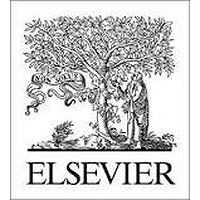In the present study, the impact of the extraction solvent on the accuracy of endogenous progesterone assay in human serum has been investigated using two selective reaction monitoring (SRM) transitions (315 > 97 & 315 > 109). Higher levels of noise and more interference were observed when more polar solvents were used for extraction, thus resulting in serious bias of the measured values of progesterone in serum. This is confirmed by monitoring the ion ratio of 315 > 97-315 > 109. This issue could not be easily resolved by changes in MS/MS transitions or chromatography conditions. More bias was observed with the SRM transition 315 > 109 for the polar solvent extraction. Hexane and 1-chlorobutane (polarity index of 0 and 1, respectively) did provide the cleanest samples with a lower noise level in the chromatograms. Moreover, the measured values of progesterone were not changed with different SRM transitions or longer retention time in search of an improved separation. Recovery tests of progesterone have been performed with 1-chlorobutane in matrices with phosphate buffered saline (PBS) 1x, PBS 1 x 3% bovine serum albumin (BSA), stripped serum/H2O (1:1) and unstripped serum. The recovery (70% similar to 80%) consistency is observed not only at different levels but also in different matrices. The equivalent recovery between PBS 1x, PBS 1 x 3% BSA and unstripped serum shows that the impact of progesterone binding to serum proteins on the measurement accuracy can be avoided with this sample preparation procedure. No significant matrix effect on the determination of progesterone was observed with 1-chlorobutane. Within the range of 12.5-2000 pg/mL, a good linearity is observed with R > 0.99 and weighting factor 1/X. Bias and covariance efficiency of QCs are within 10%. With 1-chlorobutane as the extraction solvent, the concentration of progesterone was measured where the range for postmenopausal serum is 5.74 similar to 91.7 pg/mL, which is well below the reported concentrations of 314 pg/mL similar to 942 pg/mL in post-menopausal serum by immunoassay-based techniques, while the range in premenopausal serum is 12.8 pg/mL similar to 18.6 ng/mL. (C) 2017 Elsevier B.V. All rights reserved.

Impact of sample extraction on the accurate measurement of progesterone in human serum by liquid chromatography tandem mass spectrometry
Review badges
0 pre-pub reviews
0 post-pub reviews